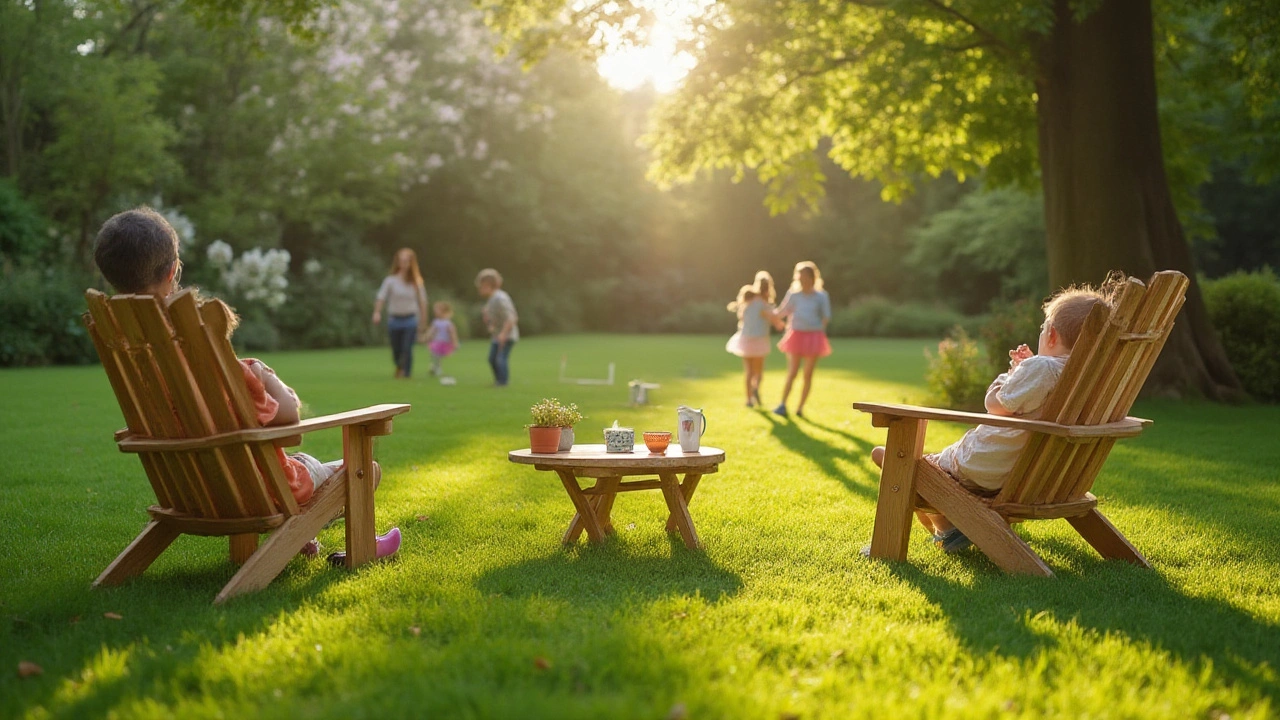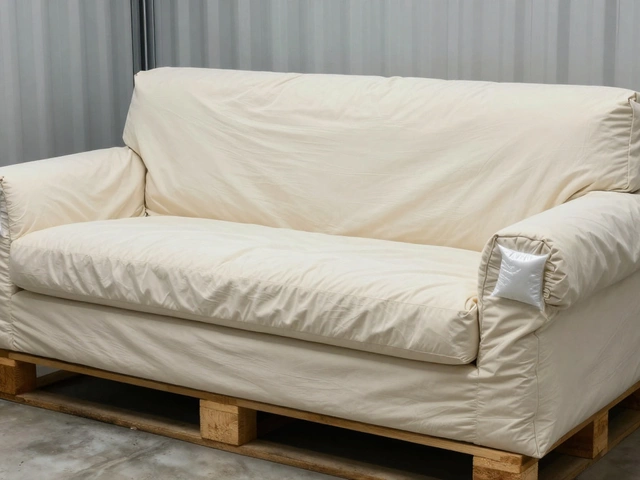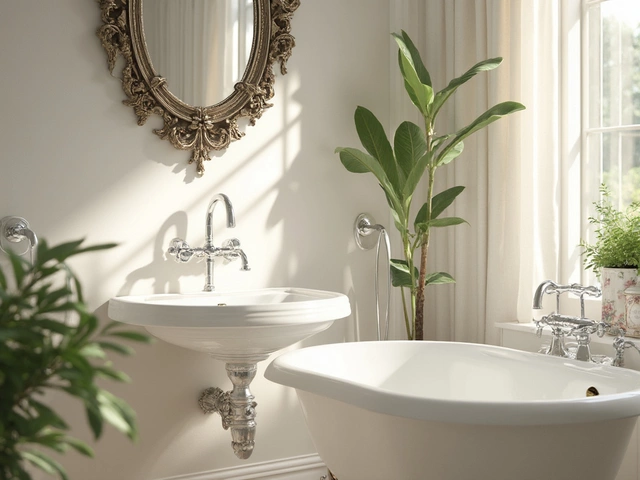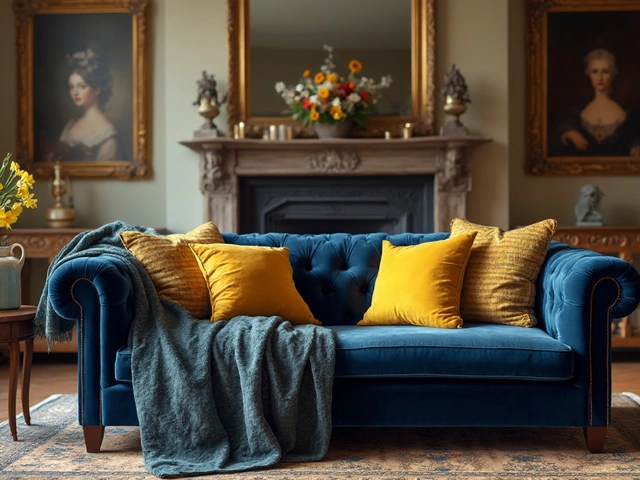You stand in your garden on a bright summer morning, coffee in hand, wondering where to stick those new patio chairs. It’s tempting to plop them right down on the grass—easy, fast, and it looks pretty chill. But is it a good idea? Let’s dig into what really happens when garden furniture meets lawn, bust some myths, and share smart tricks for anyone wanting their grass and furniture to play nice together.
The Real Deal: What Happens When Furniture Goes on Grass?
Most of us have seen those patches: weird brown or yellow marks under where the table and chairs sit, especially after a backyard BBQ or sunny afternoon hangout. Garden furniture can definitely sit on grass, but your lawn doesn't exactly throw a party about it. The weight of chairs, tables, or even loungers flattens the blades and pushes out the air that roots need to breathe. This is more than appearances—oxygen is crucial for your grass to stay green and grow. Without it, roots suffocate, leading to dead spots.
Moisture is another headache. Grass that gets shaded by furniture doesn’t dry out as quickly. In Vancouver, where rain shows up uninvited or the dew sets in heavy, wetness under furniture is common. This invites mold, mildew, and sometimes even critters that thrive in the darkness. Not exactly the vibe most people want under their picnic bench.
Let’s talk about marks. If you’ve ever moved a chair after a weekend, those dents don’t just bounce back. Some heavy furniture can actually tear through the turf, especially if legs are spindly or sharp. And, yes, pet-owners: muddy paws and scraped grass are twice as likely when shade keeps the earth damp and soft.
Strangely enough, it’s not all doom. Garden furniture on grass can create a cozy, casual look. If your lawn is robust with thick, healthy roots, it bounces back a bit better. But don’t count on miracle grass. The more often you move the furniture and the lighter it is, the less damage you’ll see. Still, putting your best couch straight onto the green? Probably not a move landscapers would back up.
Materials matter too. Plastic or resin chairs are gentler on grass than wrought iron, which can dig in and leave rust stains. Shaded spots under furniture don’t get the sun most grass types need, making those areas the first ones to look rough. There’s a tip from me—look for garden furniture with wide feet or even rubber tips. More surface area, less pressure, especially after a rainstorm.
Why Lawn Health and Grass Type Matter
Not all lawns are created equal. If your backyard looks like a golf course, you’re probably working hard to keep it that way—or you paid someone to. Healthy, deep-rooted grass holds up way better under furniture than patchy or newly-seeded spots. Kentucky bluegrass, for example, bounces back fast, while fine fescue just lays down and gives up. Knowing what you’ve got underfoot can save you a headache.
Compaction is the silent killer here. Heavier items press down, making the soil hard-packed. This doesn’t just hurt your grass—it can mess up your whole backyard drainage. In places like Vancouver, where downpours happen and soil stays moist, that compaction can end up causing puddles, drainage issues, and even attract mosquitoes. The classic backyard spiral, right?
If you’ve ever seen a turf expert at work, you’ll notice they never leave anything heavy in one spot for days. That’s because grass needs light, air, and water to keep its color and stay healthy. When you choke out one, you get yellowing blades, patchiness, or in some cases, permanent damage that takes age—and quite a bit of mud-raking—to fix.
Let’s throw in a tip for pet owners and parents: swings, sandboxes, or kiddie pools do even more damage than you’d think. It’s not just the weight, but the constant shifting around and the scraping that takes chunks out of delicate grass. High-traffic zones suffer the same way. Got a favorite spot where everyone gathers? That patch needs a break every so often if you want it looking lush.
Can anything be done if the damage already shows up? Aerate your lawn every spring and fall—rent or buy a tool, walk it across, and you’ll help oxygen get down to the roots. A little fertilizer after you clear up the spot won’t hurt, but don’t go overboard. Lawns bounce back, given time and the right care, but sometimes patience is the only real fix.
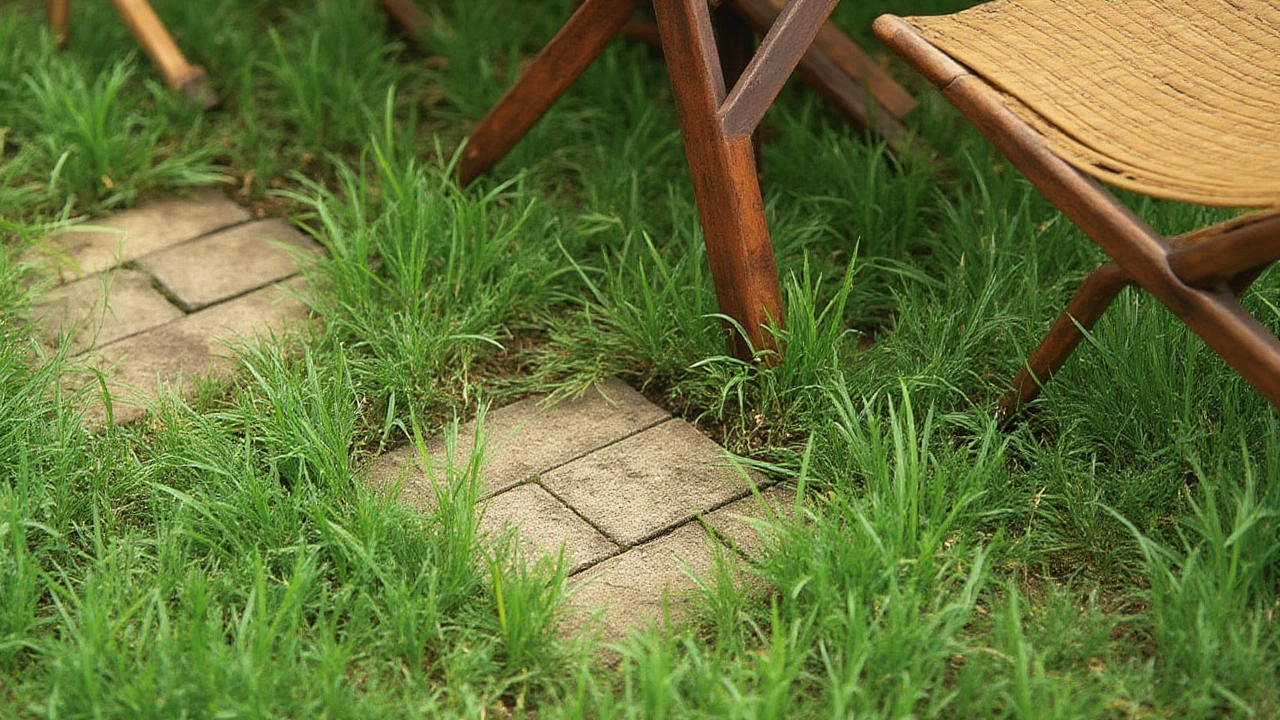
Choosing the Right Garden Furniture for Grass
Let’s be honest: not all garden furniture is made equal when it comes to sitting on grass. Lightweight plastic or all-weather resin chairs are miles better than ultra-heavy wrought iron or chunky wooden benches. They don't press down as hard, and they’re way easier to move around, meaning less compaction and fewer ugly marks.
If you want to leave anything heavy outside for more than a weekend, try finding pieces with wide, flat feet. Narrow chair or table legs sink straight in, especially when the soil’s wet. You can even stick tennis balls or commercial “furniture feet” on the ends—funny looking but super effective if you want to spread the weight and save your grass.
Thinking of something fancy? Modular or folding furniture is genius for yards where the setup changes all the time. Want a tip for outdoor events? Go for stackable chairs or tables that you can bring in easily after the guests are gone. It saves your lawn and reduces cleanup. Umbrella bases are notorious for leaving rings—pick up ones with a wide, rubberized base, which helps a lot.
Cushions, while comfy, can also get gross if left outside. Moisture collects on the bottom, and even when you don’t notice, mildew sneaks up fast. Pick covers that dry quickly or stow them away after use. Better yet, use furniture with open weaves that don't trap water underneath. That small switch keeps mold from becoming a backyard mascot.
And let’s talk furniture color. Light-colored items reflect heat and shed dirt more easily, but can look grimy if your lawn is muddy. Darker colors might be better choices if your grass is patchy or prone to dirt, though they do soak up more sun—and get hot on bright days. Little details, but they can make a difference in a Canadian summer.
Tips to Keep Both Furniture and Lawn Looking Great
The real trick is keeping your backyard both comfy and attractive. My first rule? Move stuff around. Shift your furniture every few days—just a foot or two—so grass gets a break and sunlight reaches different spots. This lets the blades recover and prevents dead patches from forming.
For weekends or parties, sure, bring out the big setup. But for long-term, storage is your friend. Fold up tables and chairs or stack them on a deck when not in use. If you don’t have hard standing, build a quick temporary platform with wood planks or rubber mats. Those save your lawn from weight and soak up less water.
If you’re handy, lay some stepping stones or gravel pads under main seating spots. These give furniture a stable, dry base and keep grass healthy around the edges. They’re not just practical—they can look sharp and blend with almost any yard style. In a pinch, large outdoor rugs or mats, especially the woven, breathable types, work as a buffer. Think of it as a picnic blanket for your furniture.
Cleaning both grass and furniture is easier than it sounds. After heavy rain, wipe down legs to keep mud from sticking and rust from sneaking in, especially on metal furniture. If you spot brown spots on your lawn, water deeply once a week (unless Vancouver does it for you), rake gently, and let sunlight work its magic.
Mowing tips? Keep your grass a little longer—a higher cut means deeper roots and better recovery from occasional pressure. You don’t need to turn your lawn into a jungle, but the old advice stands: never cut off more than a third in one go. Healthier grass equals less stress when furniture rolls out for the summer.
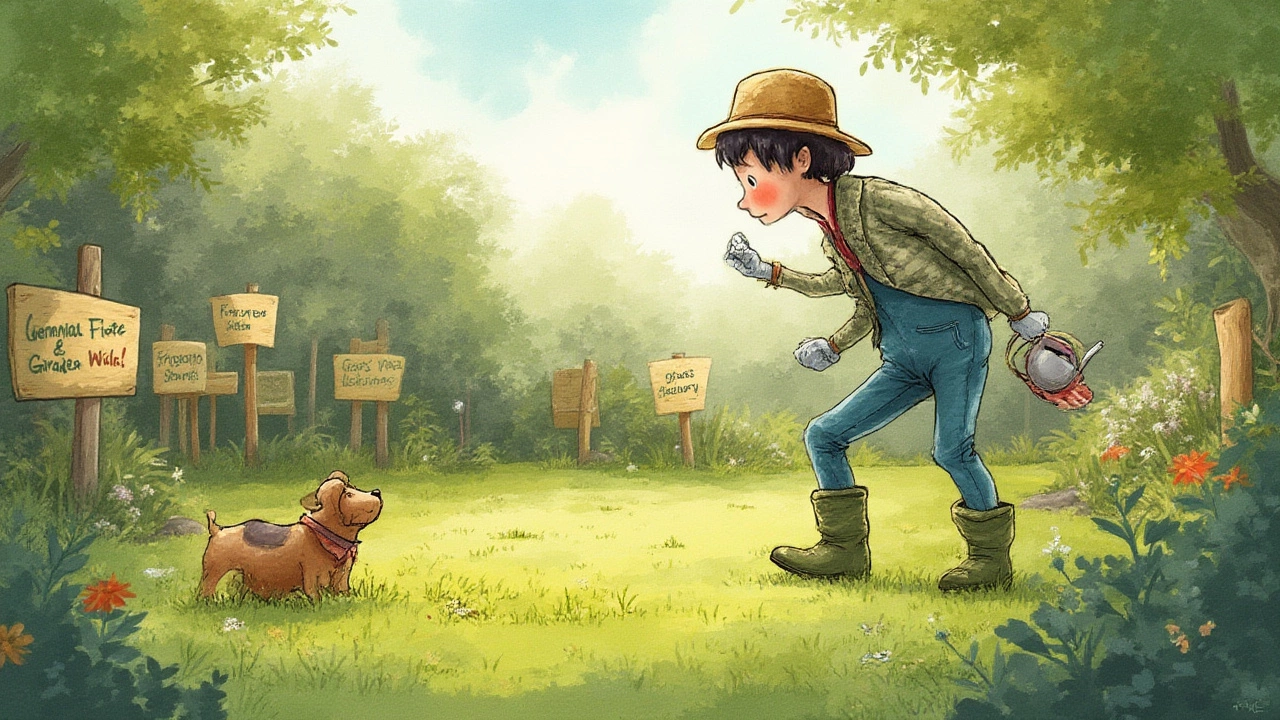
Garden Furniture Alternatives and Smart Upgrades
If you want to stop worrying about grass damage altogether, consider a few clever upgrades. Installing a small patio or deck, even a basic one with pavers or tiles, creates a permanent home for furniture and smooth transition into your lawn. For smaller yards, think portable platforms—the kinds you can roll out for a party and store away after.
Love lounging under a tree? Hammocks are a killer alternative that don’t touch the grass at all, provided you’ve got the hefty trunks or a solid frame. Garden benches with built-in planters not only look cool but distribute weight better, and the added greenery blends with the lawn. Got leftover wood from a DIY project? Even a simple wooden pallet, painted up, works as a moveable base for a coffee table or bench.
Some folks use artificial turf rugs under outdoor seating—these let furniture rest while keeping real grass protected. Just remember to lift the rug to let your real grass breathe when the party’s over. Gravel or mulch paths are easy DIYs and give a rustic, finished feel.
If you’re big on entertaining, you can even build in-ground seating nooks—lowered decks or sunken benches—that give you all the function with zero lawn pressure. Raised garden beds along lawn edges double as extra seating during parties and take the stress off heavily-used grass patches.
Want your space to look more intentional? Border seating areas with flowerbeds, low hedges, or solar lights. Not only does this mark out where furniture sits, but it naturally encourages people to stay off delicate lawn areas. Mix up your furniture layout with some poufs, ottomans, or even old-school garden stools, which are light, portable, and don’t weigh your grass down like bulky sofas do.
You don’t need a massive budget to nail the balance: the right approach, a little creativity, and understanding the give-and-take between grass and garden furniture will keep your backyard looking sharp and feeling easy to relax in.
